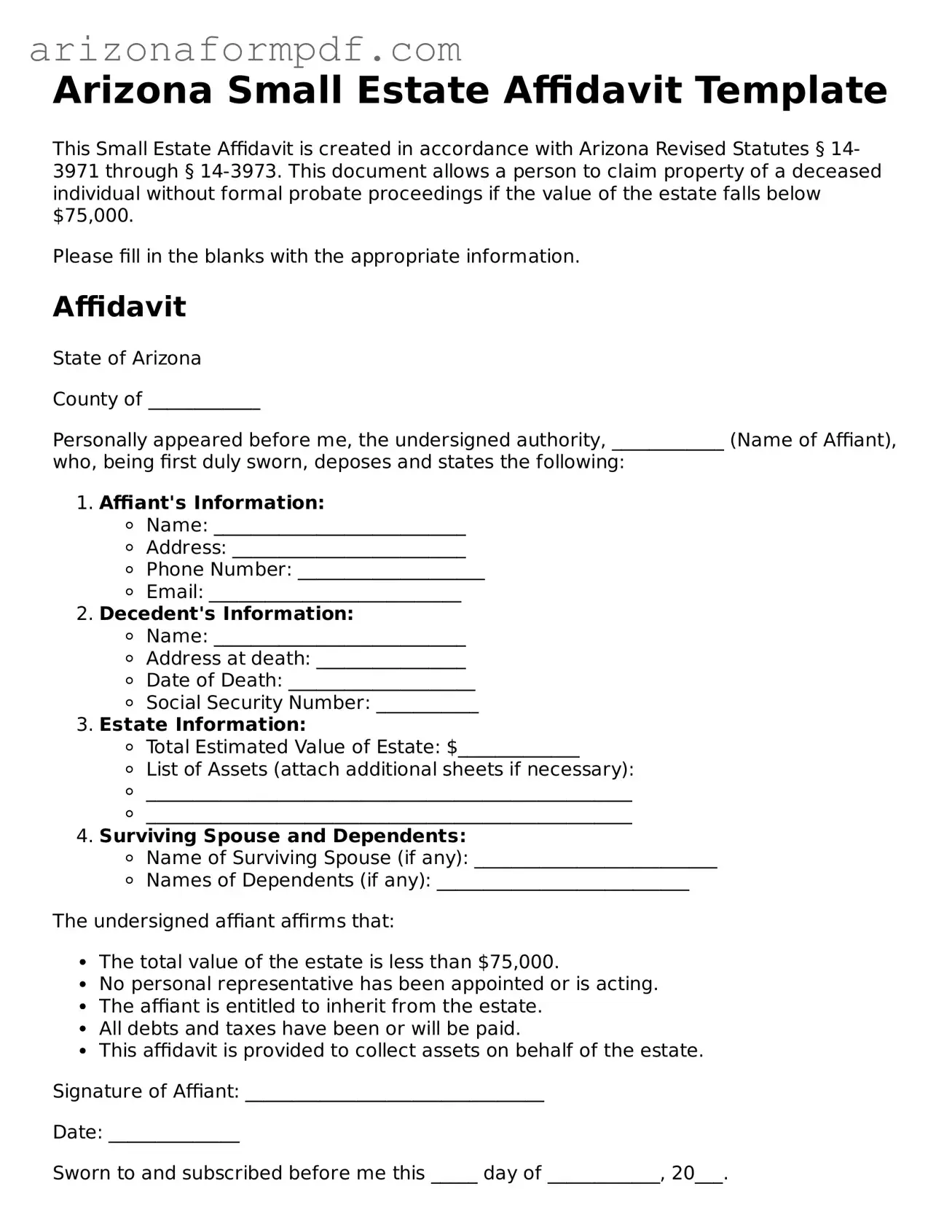What is the Arizona Small Estate Affidavit?
The Arizona Small Estate Affidavit is a legal document that allows individuals to claim assets of a deceased person without going through the full probate process. This form is typically used when the total value of the deceased's estate is below a certain threshold, which is currently set at $100,000 for personal property and $75,000 for real property.
Who is eligible to use the Small Estate Affidavit?
Any individual who is an heir or a beneficiary of the deceased person's estate may use the Small Estate Affidavit. Eligibility is contingent upon the total value of the estate being below the specified limits and the individual must not be aware of any pending probate proceedings.
What assets can be claimed using the Small Estate Affidavit?
The Small Estate Affidavit can be used to claim various types of assets, including bank accounts, vehicles, and personal property. However, it cannot be used for real property if the total value exceeds $75,000 or if the property is subject to a mortgage or other liens.
How do I complete the Small Estate Affidavit?
To complete the Small Estate Affidavit, you must fill out the form with accurate information regarding the deceased, the estate, and the assets you wish to claim. The form requires signatures from individuals who are entitled to inherit from the estate, affirming their agreement with the affidavit's contents.
Where do I submit the Small Estate Affidavit?
The completed Small Estate Affidavit should be submitted to the financial institutions or entities holding the deceased's assets. This may include banks, car dealerships, or other relevant parties. It is advisable to keep copies of the affidavit for your records.
Is there a fee associated with filing the Small Estate Affidavit?
There is typically no fee for filing the Small Estate Affidavit itself, as it is not filed with the court. However, some institutions may have their own processing fees when you present the affidavit to claim assets. It is important to check with each institution for their specific policies.
Can the Small Estate Affidavit be contested?
What happens if the estate value exceeds the Small Estate Affidavit limits?
If the total value of the estate exceeds the limits set for the Small Estate Affidavit, the heirs or beneficiaries must initiate a formal probate process. This involves filing a petition with the court to manage and distribute the estate's assets according to the law and the deceased's wishes.
